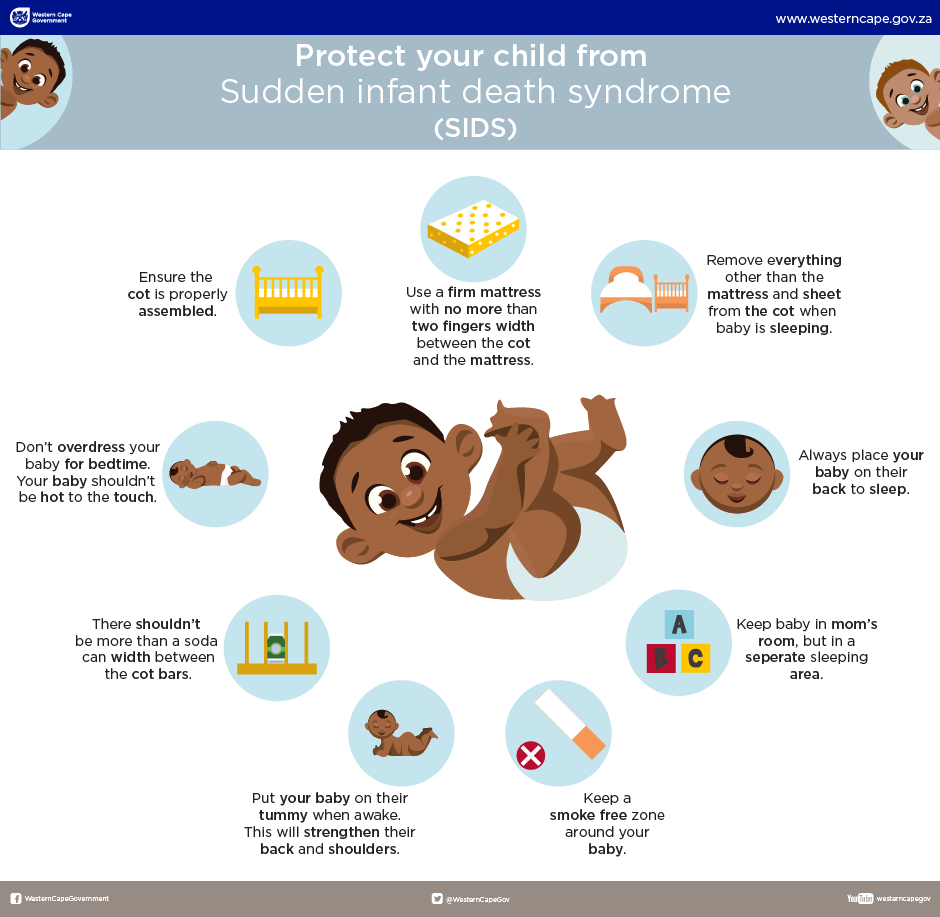Sudden Infant Death Syndrome (SIDS)
 Having a baby is a very special event in a couple’s life. Caring for a new baby can be overwhelming and the safety and health of the baby remain the top priority for the caregivers.
Having a baby is a very special event in a couple’s life. Caring for a new baby can be overwhelming and the safety and health of the baby remain the top priority for the caregivers.
Unfortunately, there are times when healthy babies die suddenly without a known cause. In most cases, the death is caused by Sudden Infant Death Syndrome (SIDS) which is also known as cot death or crib death.
What is SIDS?
SIDS is when a baby who’s younger than 1 year old dies suddenly (usually during sleep) and after an investigation, no cause can be found. SIDS can happen suddenly to a healthy baby.
Who are at risk of SIDS
According to the Safe Sleep campaign, these factors can put a baby at a higher risk of dying of SIDS:
- Babies who sleep on their stomachs.
- Babies who usually sleep on their back but is put on their stomachs for a nap are more at risk.
- Sleeping on soft surfaces such as adult beds, couches, etc.
- Getting too hot during sleep.
- Sleeping on/under bedding that is loose.
- Babies who are exposed to cigarette smoke whether it was while in the womb, their home or any other environment
- Babies shouldn’t sleep with their parents, pets or other kids. Bed-sharing with a baby younger than 11 to 14 weeks old is an added risk.
- Immunisation doesn’t increase your baby’s risk of SIDS.
How can I reduce my baby’s risk?
According to Mediclinic Infohub, you can decrease your baby’s risk by following these guidelines:
- Always put your baby on their back when they sleep or nap.
- Your baby should sleep on a firm and flat surface. The best under-blanket to use on a wrapped mattress is fleecy cotton.
- Don’t overdress your baby and make sure that their head isn’t covered when they sleep.
- Don’t smoke during and after your pregnancy. Keep your baby in a smoke-free zone.
- Sleep in the same room as your baby but not in the same bed. You can keep your child close to you by keeping them in a bassinet or cot next to your bed.
- When your baby is awake put the baby on their tummy to strengthen their back and shoulders. This must be done while the baby is being supervised.
- Educate everyone that will be looking after your baby on how to care for your child in terms of SIDS risk-reduction.
If you would like more information or have any questions, you can discuss it with your paediatrician, general practitioner, nurse or doctor at your next visit.
Remember that SIDS isn’t caused by immunisations, cots/cribs, child abuse or neglect. You can’t prevent it, but you can reduce the risks.



